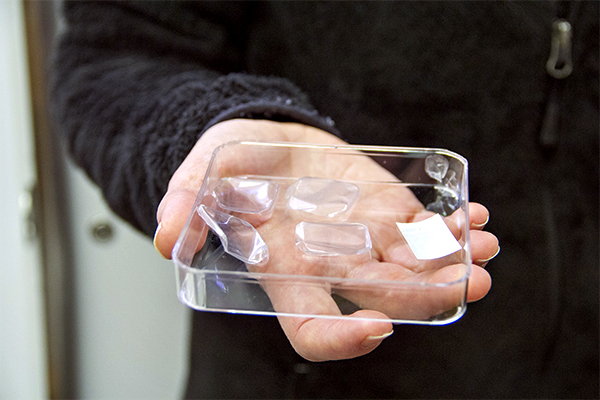University researchers developed a new way to preserve and deliver some vaccines without refrigeration to more easily distribute them to developing countries, according to a press release from the College of Pharmacy.
The researchers published their findings in the journal “Science Advances” on March 4. The researchers developed a lightweight film substance that suspends the vaccine’s particles, such as live viruses and bacteria, to protect it from temperature changes, said Irnela Bajrovic, pharmaceutical sciences graduate student and co-author of the article, in an email.
Researchers have been developing this technology over the past seven years, Bajrovic said. According to UT News, this technology has "demonstrated proof of concept for Ebola and H1N1 vaccines."
“The new technology … can be self-administered, no longer requiring trained personnel for vaccine administration,” Bajrovic said. “Furthermore, the cost of production … is relatively low due to the use of simple ingredients.”
Traditional vaccines are kept in vials and stored in refrigerators to maintain their temperature, Bajrovic said. These vaccines are ineffective at maintaining stability at temperatures over 8 degrees Celsius.
The film substance is thin and about the size of a quarter, Bajrovic said. Rather than an injection, the film is applied to the inside of the cheek, and the vaccine takes about five minutes to dissolve in the mouth, she said.
Viruses, which are used in live virus vaccines, are surrounded by a protective protein shell that is sensitive to excessive heat, Bajrovic said. Proteins are destroyed when they are exposed to temperature changes and are made ineffective, she said.
This technological innovation will help solve the problem of delivering vaccines to low-income and developing areas of the world because it’s easy to store and does not have to be weighed before being administered, said Dwight Romanovicz, a part-time research engineering/scientist professional at the Institute for Cellular and Molecular Biology. He is listed as a co-author on the journal article and ran the electron microscope for the research.
“If many vaccines can be produced like this, (it) could be really important to people who live in parts of the world that do not have the kind of medical care that the developed world has,” Romanovicz said.
Pharmacy graduate student Liem Do said this new stable version of the vaccine will benefit people in developing countries where refrigeration is not readily available.
Do said because many people are familiar with injectable vaccines, they may be skeptical at first of the new vaccine’s effectiveness.
“As people start to try to use it or studies start to get published about it, people start to get on board with it,” Do said.
This research inspired her to attend graduate school, and Bajrovic said she is writing her doctoral thesis on this new technology.
Editor's note: This story has been correct a factual error to clarify the names of vaccines. The Texan regrets this error.





















